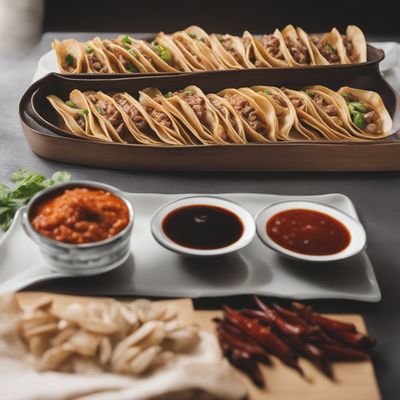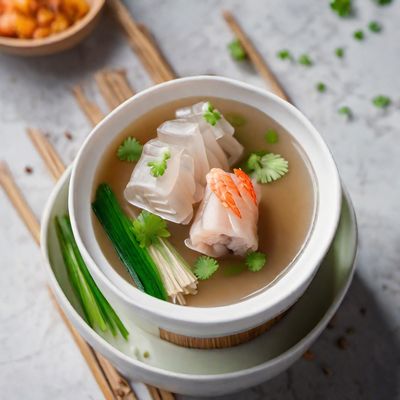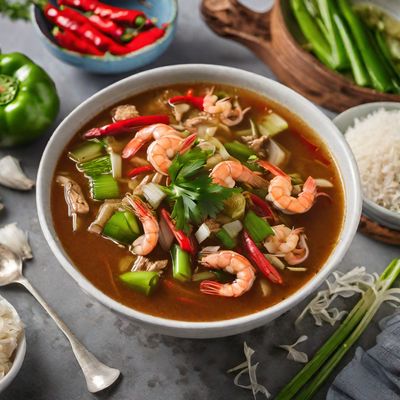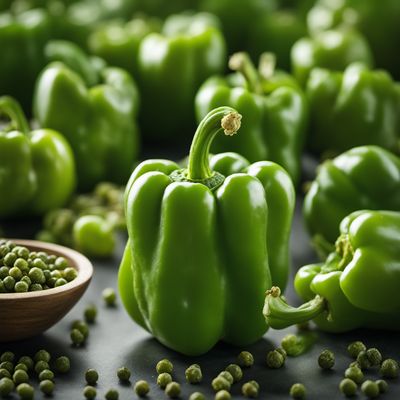
Ingredient
White pepper
The Subtle Heat: Unveiling the Secrets of White Pepper
White pepper is made from fully ripe pepper berries that are soaked, fermented, and then the outer layer is removed, resulting in a pale, creamy-colored spice. It has a milder and less pungent flavor compared to black pepper, with earthy and slightly floral undertones. The texture is fine and powdery, making it ideal for blending into sauces, soups, and marinades. Its appearance adds a delicate touch to dishes, especially those where the color of black pepper would be too prominent.
Origins and history
White pepper has a long history and is believed to have originated in Southeast Asia, particularly in India and Indonesia. It has been used in traditional Chinese, Indian, and European cuisines for centuries. In ancient times, white pepper was highly valued and even used as a form of currency. It gained popularity in Europe during the Middle Ages and became a staple in French cuisine.
Nutritional information
White pepper is low in calories and fat, making it a suitable choice for those watching their weight. It contains essential minerals such as manganese, iron, and vitamin K, which contribute to overall health and well-being.
Allergens
White pepper is generally not associated with common allergens, but individuals with specific pepper allergies should exercise caution.
How to select
When selecting white pepper, opt for whole peppercorns rather than pre-ground powder to ensure maximum freshness and flavor. Look for peppercorns that are uniform in size, with a bright, creamy color. Avoid any signs of moisture or mold.
Storage recommendations
To maintain the freshness and quality of white pepper, store it in an airtight container in a cool, dark place away from direct sunlight. Properly stored, it can retain its flavor for up to two years.
How to produce
White pepper can be produced by soaking fully ripe pepper berries in water for several days, allowing them to ferment. The outer layer is then removed, and the remaining seeds are dried and ground into a fine powder.
Preparation tips
White pepper is a versatile spice that can be used in a variety of dishes. It is commonly used in creamy sauces, mashed potatoes, soups, and marinades. It is also a popular choice for seasoning poultry and seafood. When using white pepper, start with a small amount and adjust to taste, as its flavor can be more intense than black pepper. It is best to add it towards the end of cooking to preserve its delicate flavor.
Substitutions
Black pepper can be used as a substitute for white pepper, although it will impart a stronger and more pronounced flavor. Use half the amount of black pepper called for in the recipe to achieve a similar level of heat.
Culinary uses
White pepper is widely used in Asian cuisines, particularly in Chinese and Thai dishes. It is a key ingredient in dishes such as hot and sour soup, white pepper crab, and white pepper chicken. It is also commonly used in French cuisine, adding a subtle heat to creamy sauces like béchamel and velouté.
Availability
White pepper is commonly available in most grocery stores and supermarkets worldwide.
More ingredients from this category
Recipes using White pepper » Browse all

Crispy Fried Fish with Beijing Flavors
Beijing-style Crispy Fish: A Fusion of Flavors

Teochew-style Steamed Chicken
Fragrant Steamed Chicken with Teochew Flavors

Grilled Picanha with Chimichurri Sauce
Sizzling Brazilian Picanha: A Flavorful Grilled Delight

Cantonese-style Stuffed Pancakes
Savory Pancake Delight: Cantonese-style Stuffed Pancakes

Paraguayan Boudin Balls
Savory Paraguayan Boudin Delights

Chinese Indonesian-style Stuffed Meatloaf with Mushrooms
Savory Mushroom-Stuffed Meatloaf: A Chinese Indonesian Delight

Beeshee with a New Jersey Twist
Jersey-Style Beeshee: A Fusion of Kazakh and New Jersey Flavors

Authentic Argentinian Salsa Criolla
Tango-infused Salsa Criolla: A Vibrant Symphony of Flavors

Molecular Gastronomy Dim Sum
Revolutionizing Dim Sum: Molecular Gastronomy Delights

Sichuan-style Spicy Gumbo
Fiery Fusion: Sichuan-inspired Gumbo with a Kick

Hog Maw Delight
Savory Stuffed Hog Maw: A Delightful Twist on American Cuisine

Indonesian Chinese Style Crispy Achappam
Crispy Achappam: A Fusion of Indian and Indonesian Chinese Flavors
